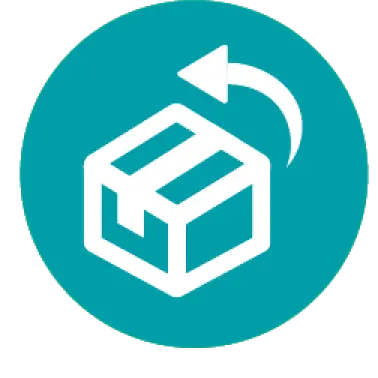Your Most Common Questions
What is a bioplastic?
Typically, when you see something labelled as a “bioplastic”, it means that plastic material contains a certain amount of plant-based content. For a while, the amount of bio-based content required to call something a “bioplastic” was moving toward a standard, but that seems to have fallen by the wayside. What’s happening instead is the term “bioplastics” is getting used to loosely describe any plastic material that includes some renewable content and is labelled as an “Other #7”.
We’ll be using the term “bioplastic” to mean a material with at least some renewable plant-based content that can be recycled and mixed together with traditional petroleum plastics classified from #1 to #6. Our bioplastics are chemically equivalent to their petroleum counterparts in processability and performance. Head over to our bioplastics page for more deets on this.
What is your material made of?
If it’s our food packaging, we currently use a base of either a PLA or Bio-PET. Today, the main feedstocks used to produce plant-based materials are corn starch and sugarcane, and the type of feedstock used is dependent on where in the world the material is being produced. As technology advances, we’re seeing feedstock sources change and evolve quickly to include more fringe crops, agricultural waste and micro-organisms. We continue to add to our material portfolio as and when new options become commercially viable, meaning when prices come down to an acceptable level and there’s adequate supply of the material.
From the base material, our technical team adds additional “herbs and spices” to make it perform at optimum levels. Our bins and totes are primarily I’m Green™ by Braskem and our desk accessories are made from a proprietary blend that our brainy scientists developed in-house.
As for our carry out containers, plates and bowls, these are made from bagasse (sugarcane waste by-product) and our cups and soup bowls are made from SFI (Sustainable Forestry Initiative) paperboard. Just like with our bins, totes and carry out containers, the raw material used for our pallet stretch wrap, food storage bags and bin bags is sustainably sourced and rapidly renewable sugarcane.
Are plant-based plastics as durable as petroleum plastics?
Yup! We’ve worked really hard to make sure that’s the case. When we conduct freezer and drop tests to showcase durability to our customers, our PLA material performs the same if not better than many fossil fuel counterparts. Our Bio-PET is chemically identical to traditional petroleum-based PET, meaning there’s no difference in performance, including durability. We also have a keen focus on design and form to further increase our product quality and functionality. In some cases, we’re able to both down gauge a package (meaning reduce the thickness of the material and thus save both weight and resources) and improve its durability at the same time.
Our Microwavable To Go Containers made from CPLA, are a perfect replacement for the petroleum equivalents made from polypropylene used for things like takeout or ready meals found in the grocery. Ours are just as tough and able to withstand temperatures of up to 100°C but we’ve replaced the fossil fuels with an annually renewable resource, plants. 🙌
Should I buy compostable or curbside recyclable?
When it comes to clear packaging, we’ve split our materials into two categories: Bioplastics and Biodegradables. Our Bioplastic packaging made from Bio-PET carry the #1 symbol and are accepted in most curbside recycling programs. Our Biodegradable clear and take-out packaging is made from either PLA or bagasse and is optimized to break down in industrial compost facilities (although PLA is just as recyclable as PET, and we use recycled PLA every day in our facilities – it’s more about whether your local recycler accepts these materials).
At good natured®, we’re committed to offering compostable options as the most eco-conscious choice, but we recognize not all communities are ready to go all the way to compostable. Here’s a few reasons why we think it’s best.
Using compostable food packaging can actually help the recycling stream, because food scraps and its container can all go in the same composting bin, decreasing food contamination in typical recycling streams (if you’re putting any containers in your blue bin now that are not squeaky clean, your local recycler is tossing them out, btw). Also, when a package is composted, that compost is used back in the natural environment to create a variety of things, such as food, landscaping, or maybe more plant-based materials. And finally, compostable packaging is usually made with the highest percentage of plant-based content, meaning we’re using more renewable materials and less fossil fuels for everyday items. That’s a big win in our books!
What payment methods can I use?
We accept all major credit cards including Visa, Mastercard and American Express, as well as PayPal.
Where The Magic Happens
BRAMPTON
5 Abacus Road
Brampton, Ontario, L6T 5B7
AYR
15 Waydom Dr
Ayr, Ontario, N0B 1E0
RICHMOND
11413 N. Burlington Road
Richmond, Illinois, 60071
HOUSTON
6817 Wynnwood Ln
Houston, Texas, 77008



